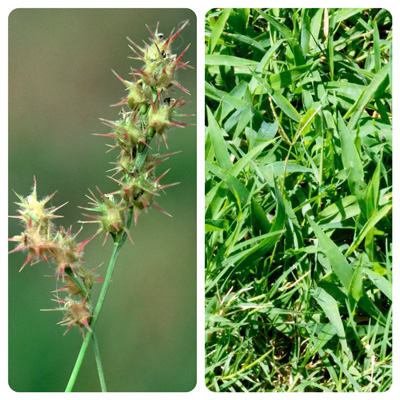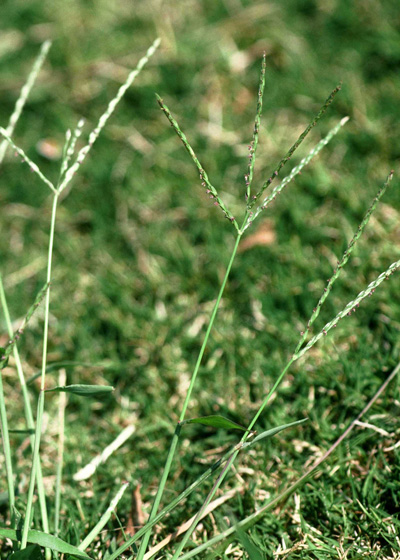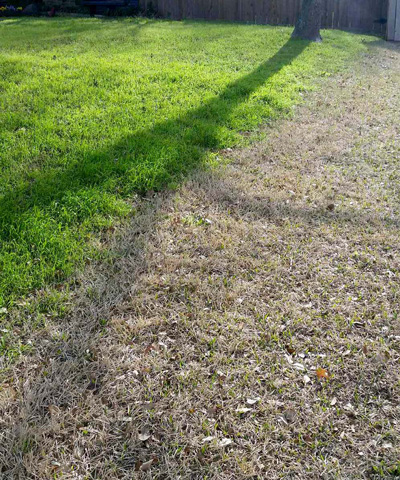Pre-emergent Time is Here or Near
Depending on where you live in Texas, it’s either time to apply pre-emergent weedkiller granules or it soon will be.
This is a topic that continues to confuse many gardeners. Please let me try to explain it in quick facts.
• Pre-emergent weedkillers kill weed seeds as they try to germinate.
• Therefore, they do not work on perennial weeds (those that come back from their roots).
• They also do not work once a weed is up and growing vigorously.
• To state it again: They must be applied prior to germination. If you can see the weed growing, you’ve blown it for another full season.

• They are most effective on annual grassy weeds, although annual broadleafed weeds will be repressed by their use as well.
• The three most commonly sold trade names you’ll find (but there are others) are Dimension, Halts and Balan. They are sold in local independent retail nurseries, hardware stores and feed stores as well as other stores.
• Any one of those three can be used on any type of permanent lawngrass without risk as long as the turf has been established for one full growing season, including its first winter.

• They should be applied when the soil is moist, but the grass blades are dry. Mow first, then apply the granules at the recommended rate. Water lightly to coat the surface of the soil with the granules.
• All three of those products are effective for about 100 days. Therefore, for warm-season weeds a follow-up “booster shot” application will be needed 90 days after the first application.
• It is wise to buy enough product in early spring as you will need for your second and third treatments (details later), as many retailers do not continue to stock pre-emergents after the initial spring sales rush.

Timing of the applications
This is the critical factor, and it’s the most common place where gardeners mess us. You must have the timing right or you’ll miss your chance.
• Determine the average date of the last killing freeze for your area! You simply must have that date readily at hand.
• Your first application of pre-emergent granules must be made 1-2 weeks prior to the average date of the last killing freeze for your county. Google that date and figure back two weeks and you’ll have it.
• Your second application (that “booster shot”) must be made 90 days after the first treatment. So, if granules went down March 10 (as example), another round should go down on or near June 10.
And now for the winter weeds
This is where folks get confused. They look at their lawns right now and they think they’re seeing the weeds (specifically crabgrass) that I’m talking about preventing.
But what they’re actually seeing are two other grasses: annual bluegrass and rescuegrass. Those germinated last fall, in the cool months. So did the clover, dandelions, chickweed and henbit you’re seeing right now.
• Very early fall application to prevent winter weeds. Use any of those same three pre-emergent granular products applied between August 25 and September 5 to prevent germination of annual bluegrass, rescuegrass and annual ryegrass in any type of Texas turf. (Do not use if you overseed your permanent turf with ryegrass or if you overseed fescue lawns with fescue seed to keep them thick.)
• Gallery is a pre-emergent product you can apply August 25-September 5 to prevent germination of broadleafed weeds such as clover, dandelions, henbit and chickweed in lawns. You could also treat young seedlings of those weeds in October or November with a broadleafed weedkiller spray.
Those, then, are the details on application of pre-emergent herbicides. I hope I’ve spelled it all out in a way that makes it easy to understand and follow.

Final Note: You may have wondered why I didn’t mention “weed-and-feed” products. Simply put, I’m not a believer. Right now, it’s too early for “feeding,” and by the time it’s right for applying fertilizer it will be too late for “weeding.” I believe in both practices. Just not at the same time.
